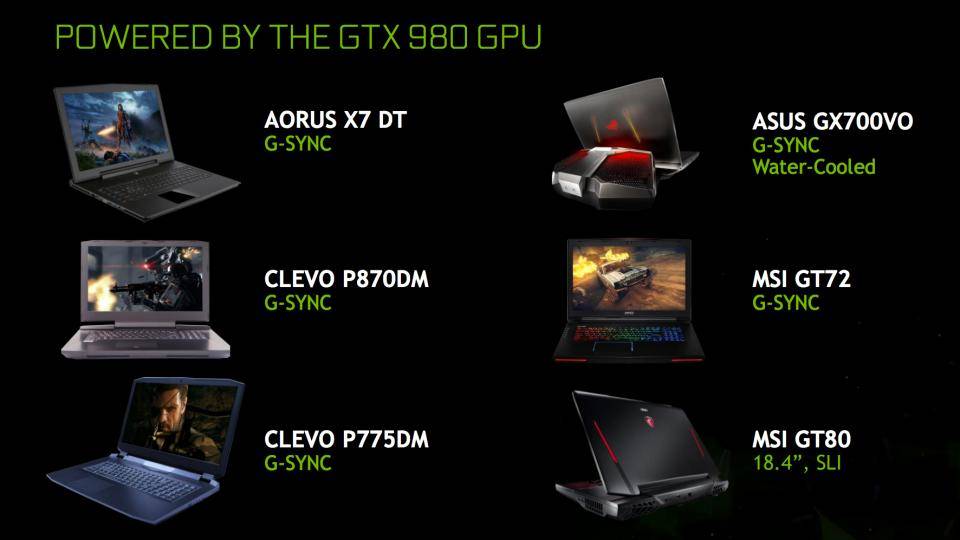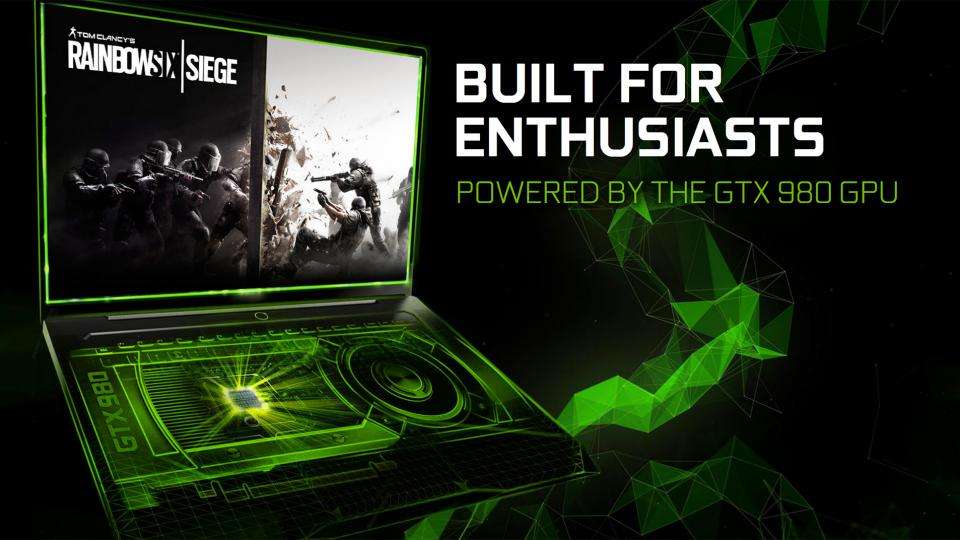Opting for a gaming laptop over a desktop PC typically means sacrificing around 20-30% of the total performance, even if the laptop uses the 'same' components as the desktop system. This is because laptop graphics chips are typically cut-down version of the full-fat GPUs found on desktop add-in cards, and they struggle to deliver the same number of frames per second, or cope with the highest quality settings even though they share the same name as the desktop version. This might have been true in the past, but it seems Nvidia has decided enough is enough; it has found a way to add desktop-class silicon into a laptop, for uncompromising gaming potential.
The chip in question is the GTX 980 , Nvidia's mainstream high-end GPU which is based on the company's incredibly efficient Maxwell architecture. It's no cut-down derivative either; you still get the same number of shader cores, same clock speed and same amount of memory (4GB, although OEMs can add up to 8GB if they like). That memory even runs at 7Gbps - the same speed as the desktop card and 2Gbps faster than the GTX 980m mobile chip. It will also increase core clocks up to boost speeds similar to the desktop chip when temperatures allow it, although laptop cooling fans will have to work a little harder than they would with a laptop GPU. The power phses have been uprated too, with anywhere from four to eight dedicated phases solely for the GPU.
The silicon hasn't even had to be redesigned in order to make it work in a laptop; Nvidia merely binned all but the best performing chips, saving the ones with the best power consumption for laptop use. According to a company rep it wasn't a significant difference, and is unlikely to have much overclocking headroom, but it is entirely possible. It's a testament to just how efficient Maxwell actually is, as the 17in and 18in desktop replacement laptops that will use the chip haven't required any real modification in order to cool it.
In terms of real-world performance, 1,920x1,080 resolution gaming on a 17in laptop should be without compromise; expect GTA 5 to run at 89fps, The Witcher III: Wild Hunt to run at 61fps, and Metal Gear Solid V: The Phantom Pain to run fast enough that the frame cap never drops below 60fps. Three panel surround gaming will be possible using external displays, and any laptop equipped with a GTX 980 will also meet the minimum specifications for Oculus Rift VR gaming.
Nvidia has worked with OEMs to unlock access to core clocks, memory clocks and fan speed controls, which are typically locked and hidden from the user in laptops in order to avoid accidental damage and potential failed systems, meaning users will be able to push the energy-efficient Maxwell GPU architecture even further than the reference speeds. The company will even be certifying overclocking software to help extreme gamers get the most from their chips without melting a hole through their keyboard trays. Once paired with Intel's multiplier-unlocked Skylake K processors, we could soon see a range of laptops that are just as overclocker-friendly as a desktop PC.

Manufacturers Asus, MSI, Gigabyte and Clevo are already on board, with MSI planning to fit two GTX 980s into a single 18in laptop using SLI and Asus even demonstrating a laptop with a water-cooling loop for extreme cooling. Clevo doesn't sell directly here in the UK, but supplies its chassis to companies such as Scan, Chillblast and XMG, so there should be plenty of choice once laptops start shipping. Every model will support Nvidia's G-sync adaptive display technology for stutter-free gaming, too. Just don't expect them to come cheap; based on what we've heard at this early stage, you shouldn't expect any change from £2,000.
Are desktop chips in laptops the future of portable PC gaming? We'll find out later this month when the first units start to arrive.

